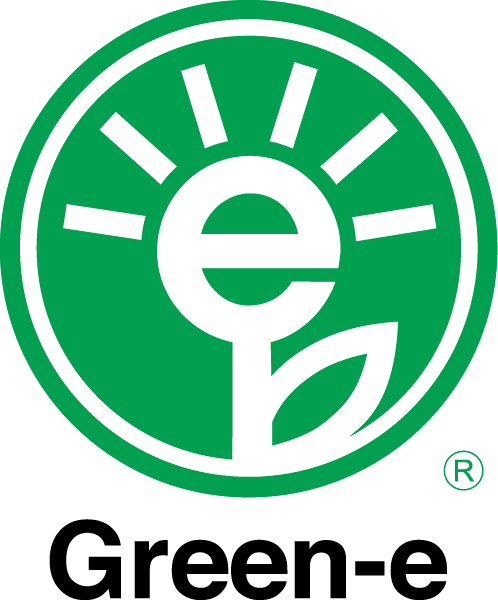Renewable Energy Certificates and Carbon Offsets 3/17/2022
 Have you wondered how you can enhance your sustainability messaging? As awareness is rapidly increasing around the impact businesses can make in the fight against climate change, sustainability messaging as a tool for customer engagement is more important than ever. In fact, a 2019 Nielsen survey found that more than 30% of consumers would pay more for an environmentally friendly product. The COVID-19 pandemic has driven sustainable purchasing even further, with over 60% of consumers surveyed in 2020 reporting to have made more environmentally friendly purchases. In turn, retailers are looking to meet customer demand by sourcing more sustainable products for their shelves.
Have you wondered how you can enhance your sustainability messaging? As awareness is rapidly increasing around the impact businesses can make in the fight against climate change, sustainability messaging as a tool for customer engagement is more important than ever. In fact, a 2019 Nielsen survey found that more than 30% of consumers would pay more for an environmentally friendly product. The COVID-19 pandemic has driven sustainable purchasing even further, with over 60% of consumers surveyed in 2020 reporting to have made more environmentally friendly purchases. In turn, retailers are looking to meet customer demand by sourcing more sustainable products for their shelves.
A major way that companies are publicly committing to sustainability goals is through creating climate action plans that outline their climate strategies. One of the key components of creating a climate action plan is finding ways your organization can reduce its carbon footprint.
What is a Carbon Footprint, and Why Does it Matter?
A carbon footprint is a total inventory of the amount of greenhouse gases—such as carbon dioxide and methane—that are emitted as a result of your organization’s business activities. Calculating your carbon footprint can be an incredibly useful tool to set sustainability strategies. For example, if your carbon footprint reveals a lot of emissions in your transportation activities, you can find ways to reduce those emissions by switching to more environmentally friendly transportation options or purchasing carbon offsets to offset these emissions.
A few key strategies to reduce your business’s carbon footprint are:
- Reduce energy use by implementing energy efficiency practices.
- Reduce paper and plastic waste along your operations and supply chain.
- Implement a hybrid or remote workstyle to reduce emissions from employee commuting.
- Monitor emissions across your supply chain.
- Power your operations with renewable electricity.
- Purchase carbon offsets for your remaining emissions.
While it’s always best to focus on reducing emissions before offsetting them, offsetting is an effective way to account for the emissions you cannot reduce.
The Differences Between RECs and Offsets
A Renewable Energy Certificate (REC) is a tradeable certificate that represents the renewable attributes of 1 megawatt hour (MWh) of renewable electricity. One of the easiest ways you can use RECs is by subscribing to your utility’s renewable electricity product for the buildings you own. However, if you don’t own your building, or use a co-packer, don’t worry! Luckily RECs allow you to participate in the renewable energy market through retail options, such as buying standalone (or “unbundled”) RECs from a marketer, broker, or supplier. By purchasing enough RECs to match 100% of your electricity usage, you can effectively claim that your business operates on renewable energy.
For more information on different ways you can buy renewable energy, see Green-e® Marketplace: An Introduction to Purchasing Options for Buyers. For resources on purchasing Green-e® certified renewable electricity in your area, you can visit www.buycleanenergy.org, or for a full list of Green-e® sellers, see www.green-e.org/certified-resources.
A carbon offset is similar to a REC in that it is also a tradeable certificate, but it represents the reduction of 1 metric tonne (mT) of carbon dioxide emissions. Your purchase of carbon offsets funds projects that reduce GHG emissions by either capturing (i.e., “sequestering”) GHGs so that they cannot be released into the atmosphere, or avoiding/reducing emissions that would have otherwise been created. Examples of carbon offset projects include landfill methane capture, improved forest management, and energy efficiency projects.
While there are many REC and carbon offset providers in the world, not all of them adhere to best practices in quality sourcing, accounting, and reporting. Sourcing RECs or offsets that are certified by an independent third party is a great way to ensure that your purchase is as impactful as it can be.
Green-e®, A Third-Party Certification To Enhance Your Credibility .jpg)
Green-e® Marketplace is a program run by the nonprofit Center for Resource Solutions, and has been the nation’s leading independent certification and verification program for renewable energy and greenhouse gas emission reductions since 1997. Through this program, companies can certify products “Made with Renewable Electricity” or as “Carbon Neutral”.
The Green-e® Marketplace program verifies that the renewable electricity purchased or generated and the carbon offsets purchased by program participants meet the strict environmental and consumer protection standards of the Green-e® Energy and Green-e® Climate certification programs respectively; that participants purchase a minimum amount of renewable electricity relative to their electricity usage and carbon footprint; and that carbon offsets purchased meet the highest quality standards.
The Green-e® certification mark is a trusted seal used by businesses to communicate their environmental leadership on websites, corporate social responsibility (CSR) reports, marketing materials, and over 700 product labels in stores in the US and Canada. If you are interested in learning more about how to certify your own business, you can reach out to marketplace@green-e.org for a prompt response and helpful guidance tailored to your business needs. Learn more about the Green-e® program at www.green-e.org.
You can find the Center for Resource Solutions at our upcoming Global Market: Spring Buying Days. If you are participating and would like to learn more about the Green-e® program, you can request a meeting with them today.
Editor's note: This article is sponsored content

